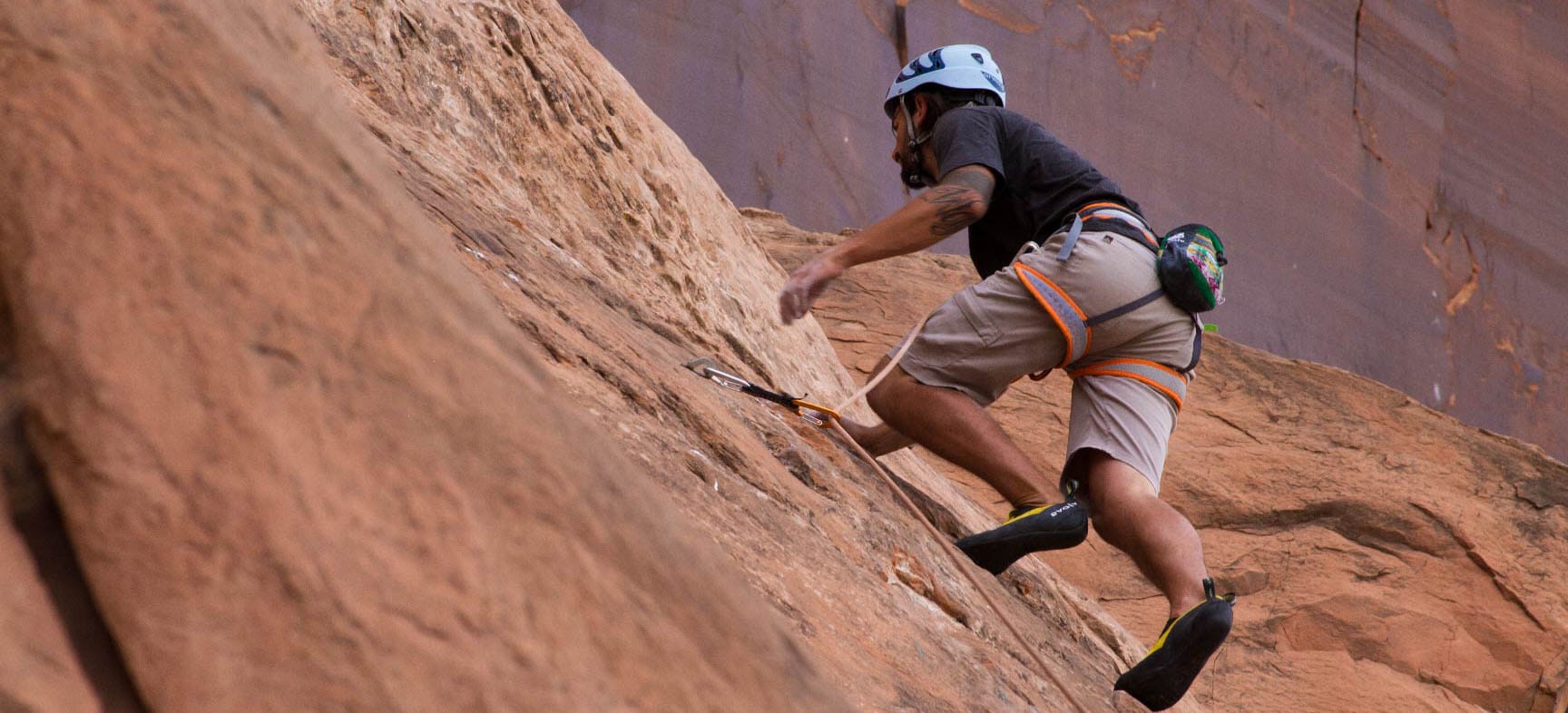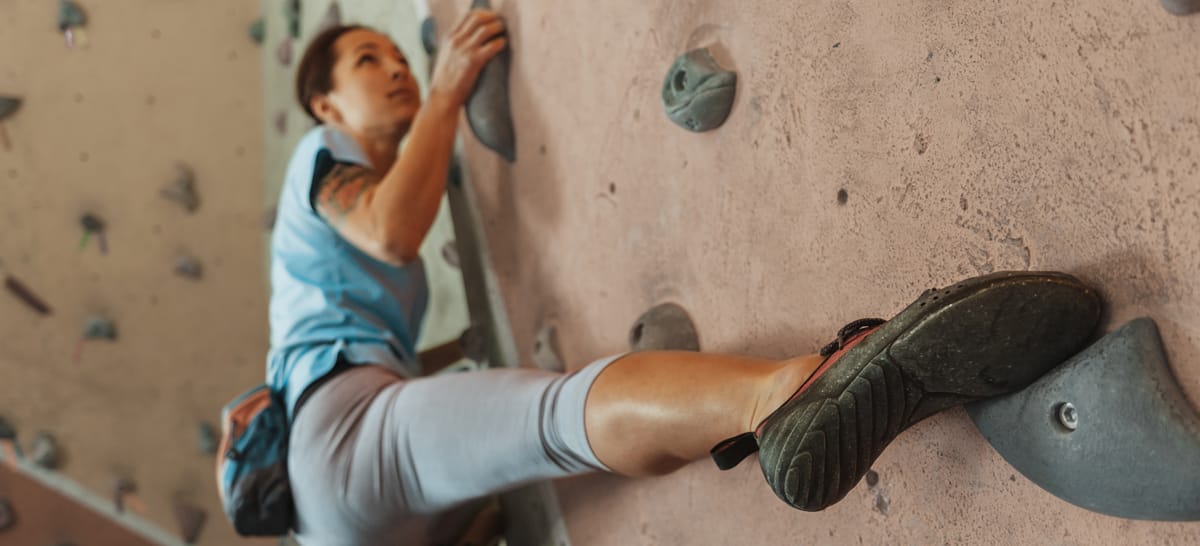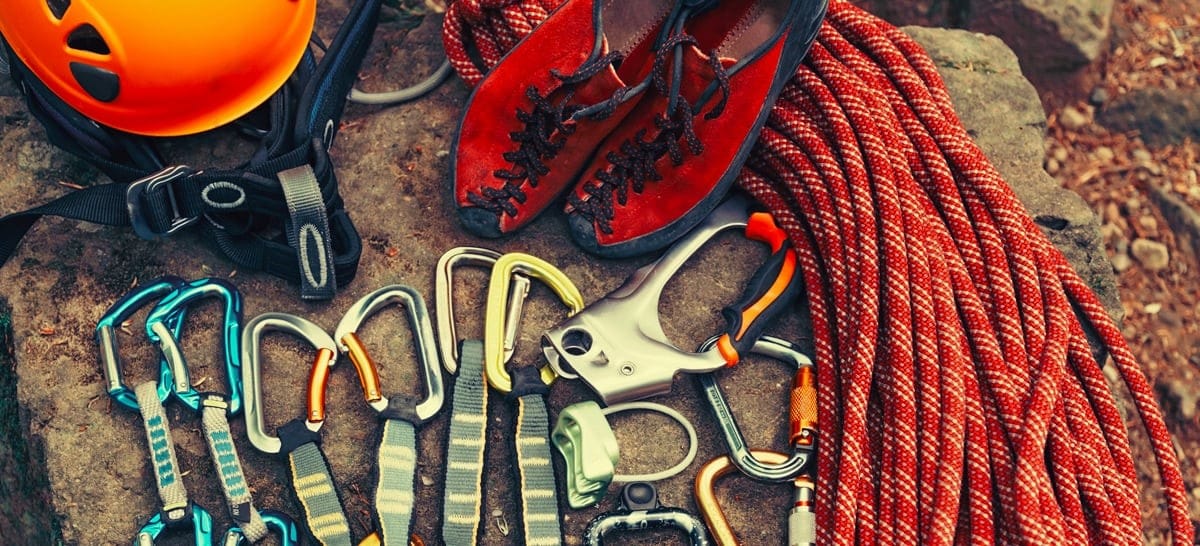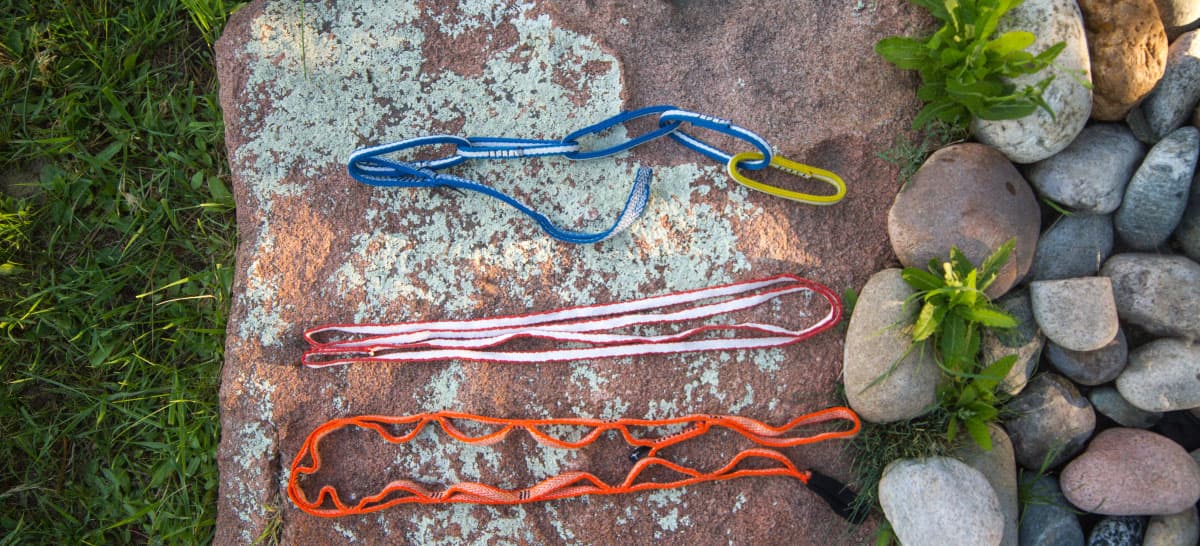It takes a certain attitude to head for the hills in sub-zero temperatures. Climbing in winter requires endurance and tolerance over all, with the ability to withstand rapidly declining weather and have the mindset to turn back if need be. Climbing is as much a mental game as it is physical. Routes that are easily accessible in the summer aren't always straightforward when loaded with snow. A winter route might utilize different features such as ledges or ridges in order to stay clear of snow accumulating above.
Pack Lightly
The key to moving across wintry terrain is to pack for a fast and light climb. Gear selection should focus on minimal pieces, which the climber intends to use, and one piece, such as a weather shell, that adds an extra layer of security. When getting a pre-dawn alpine start, the general mantra is "be bold, start cold". As the body engages in high exertion activity, such as steep uphill hiking, it warms quickly, causing sweat under a heavy puffy jacket. When in cold weather, sweat causes dampness and cools the body to dangerous levels. Synthetic layers such as moisture-wicking base layers allow easier transfer between the skin and the outside, therefore better regulating the body's temperature during high exertion.
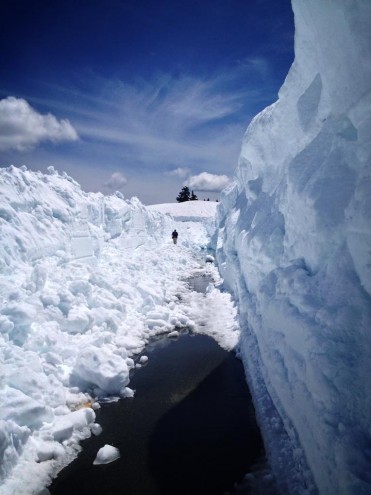 Invest in Quality Gear
Invest in Quality Gear
Having well-made, good quality gear makes all the difference in cold environments. Be aware of having items that serve as a contingency piece. Along with packing the ten essentials, be sure to have a pair of crampons or micro-spikes that help facilitate movement across icy terrain. While some crampons are made specifically for hooking to a mountaineering boot, others have a universal style, which easily affix to any hiking boot. In case of getting trapped for a period of time, pack a small camp stove and gas for heating tea or cocoa and keeping the body hydrated. In cold, dry weather, the body requires more liquid, especially for prolonged periods. Exertion also makes the body sweat more, which evaporates quicker in cooler conditions. Carry a small thermos with soup on longer trips and heat up quick batches of hot drinks during breaks.
Protect Yourself from the Sun
Just as essential as protecting your body is protection for your skin and eyes. Sun reflection off snow can cause blindness due to the intensity of UV Rays. Invest in a pair of wrap-around polarized sunglasses or ski goggles, which cover the eyes and the side of the face, mitigating the amount of light that's exposed. Similarly, heat waves are more intense when reflected off ice, thus increasing the risk of severe sunburn. Have sunscreen with a high SPF Rating and apply to sensitive areas frequently, such as the back of the neck, under the nose, and ears. If sunburned, apply aloe immediately, and watch affected areas for blisters. If symptoms become too painful, take an ibuprofen or pain reliever immediately and seek medical attention.
Check Route Conditions
Before heading out for the day, carefully check conditions, including weather and avalanche warnings. When choosing a route, use features such as ridges to stay above dangerously loaded gullies or chutes, and watch for corniced terrain where soft snow deceptively overhangs rock. Always carry an avalanche beacon, probe, and shovel, and know how to use them. Take a class on avalanche safety before the winter, which teaches how to read avalanche-prone terrain and how to operate equipment, including quickly finding someone who has been buried.
Never guarantee a summit or try to reach the top "at any cost". No mountain is ever worth the potential risk to life and limb. Getting to the top means you've only made it halfway. The most important lesson to winter climbing is to mitigate any risk, have a strong mind that's willing to turn around, and keep the body well maintained, from hydration to skin and eye care. Winter mountaineering is a deceptive game, but with proper planning, it doesn't need to be left up to chance.
